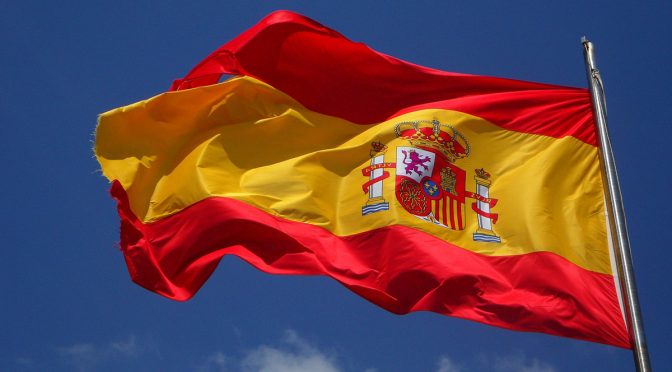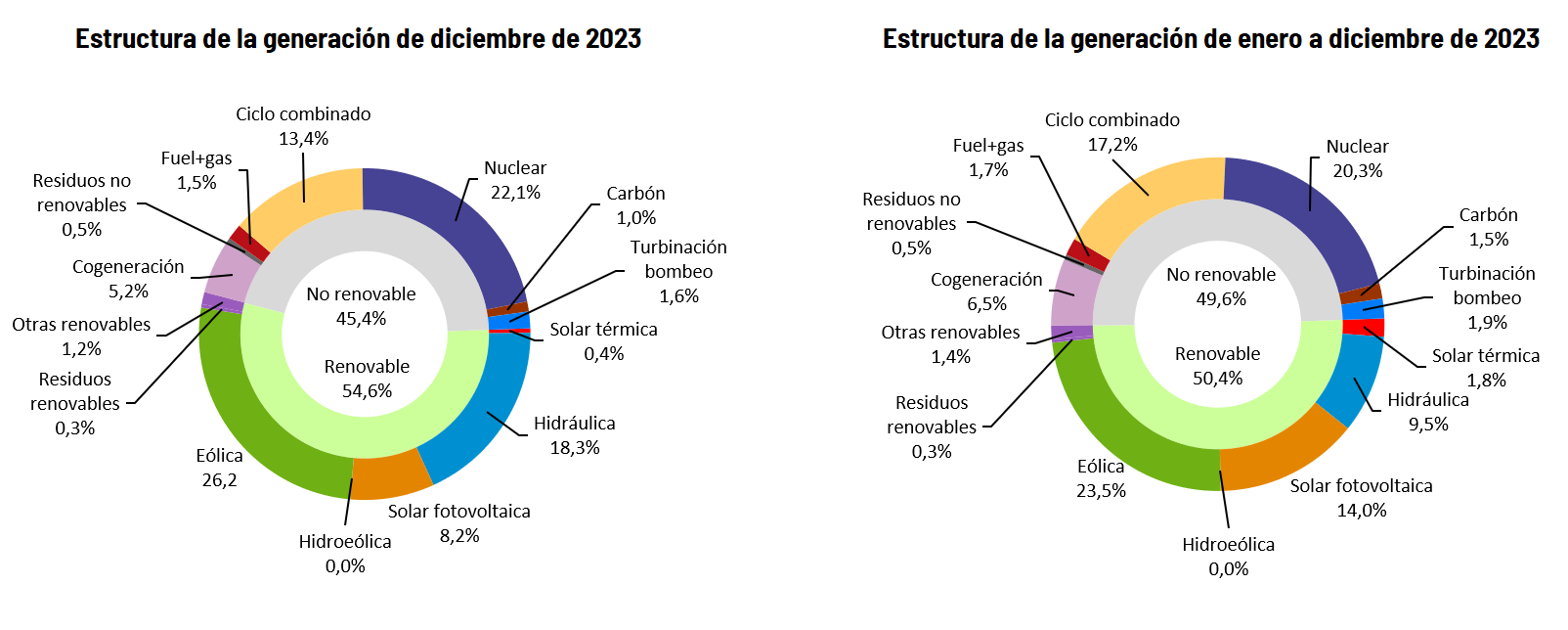54.6% of the month’s electricity production was renewable and 78% free of CO2 equivalent emissions. It represents 24.6 percent more energy from renewable sources compared to December 2022.
December closes a historic year for renewable energies, which have broken records for both production and participation in the national mix (50.4%).
The peninsular demand was 3.7% higher in December 2023 than in the same month of 2022. Meanwhile, in the Balearic Islands and the Canary Islands, electricity demand grew by 6.4 and 4.8 percent, respectively.
National electricity demand experienced an increase of 3.8% in December compared to the same month of the previous year, once the effects of temperature and work hours were discounted. In gross terms, a demand of 21,125 GWh is estimated, 4.1% higher than that of December 2022.
During 2023, Spain has registered a demand of 244,686 GWh, 2.3% less than in 2022. Again, once the effects of the calendar and temperatures are taken into account, demand decreases by 1.9% compared to the previous year .
This December, renewables have reached a share of 54.6% of the generation mix with 12,354 GWh recorded, according to the data available today. The contribution of renewables this month has been 24.6% higher than the same period in 2022.
On the one hand, wind power, the leading production technology for the third consecutive month, with a 26.2% share in the generation structure and 5,913 GWh, has contributed to the good figure achieved by renewables. In addition, hydraulics reaches third position in the mix with 18.3% of the national total. For its part, solar photovoltaics contributed 8.2% of the total in Spain in December and its generation has grown by 64.1% compared to December 2022.
With provisional data as of December 31, the annual production of renewables in Spain has exceeded 50% (50.4%) for the first time and has broken records both in participation in the mix and in GWh generated, reaching close to 135,000 GWh , data that confirms Red Eléctrica’s forecasts. On the other hand, 78% of the month’s electricity production came from technologies that do not emit CO2 equivalent.
Peninsular electricity demand
In the peninsular electricity system, demand in December was 3.7% higher than in the same month of 2022, taking into account the effects of work schedules and temperatures. In gross terms, a demand of 19,919 GWh has been registered, 4.1% more than in the same month of 2022.
Throughout 2023, peninsular demand has been 229,526 GWh, 2.5% less than that registered in 2022. Once the effects of work and temperatures are taken into account, demand decreases by 2.1% .
The set of renewables generated 56.8% of the peninsular total in the month and 81.4% came from technologies that do not emit CO2 equivalent, while throughout 2023 a coverage with renewables of 52.3 percent was achieved. hundred.
Electricity demand in the Balearic Islands and the Canary Islands
In December in the Balearic Islands, electricity demand increased by 6.4% once the effects of work hours and temperatures were taken into account. In gross terms, monthly demand is estimated at 423,222 MWh, 6.1% higher than that registered in December 2022. In 2023, Balearic gross demand is estimated at 6,004,230 MWh, 0.6% less than in the same period of the previous year.
Regarding generation, the combined cycle, with 77.4% of the energy produced in the Balearic Islands, was the islands’ first source in December. For its part, renewable energy without equivalent CO2 emissions generated in the Balearic community has increased by 19.9% compared to the same month of the previous year and represents 10.1% of the total.
Furthermore, during this month, the submarine link between the Peninsula and Mallorca contributed to covering 26.7% of the Balearic electricity demand.
For its part, in the Canary archipelago, the demand for electrical energy, once work schedules and temperatures are taken into account, has increased by 4.8% compared to the same month of the previous year. In gross terms, demand stood at 748,963 MWh, 4.2% higher. In the accumulated year 2023, the gross demand of the Canary Islands is estimated at 8,764,819 MWh, 2.7% more than in the same period of 2022.
Regarding electricity generation in the Canary Islands, the combined cycle, with 48.6% of the total, was the first source in the month of December, while renewables and emission-free technologies represented 13.1% of the production, 67.8% more than in December 2022. Wind energy accounted for 9.7% of the Canary Islands total.



